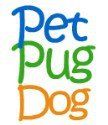Pug Dog Legg-Calve-Perthes
Overview
This a degenerative disease of the head of the femur bone on the hind leg (the ball that fits into the socket in the pelvis; which makes up the hip joint).
Note that a loosening/slipping of where the head of the femur fits into the socket is associated with hip dysplasia, a separate and distinct issue. With Legg-Calve-Perthes (LCP), there is necrosis; the bone starts to deteriorate and die. This causes pain and mobility issues, and can be crippling. Dogs affected by LCP can have issues with osteoarthritis afterward. In most cases, it occurs in just one hip.
Please note:
PetPugDog is reader-supported, and some of the product suggestions on this page may be affiliate links. As an Amazon Associate we earn from qualifying purchases. This is at no extra cost to you and helps keep this site running.

Occurrence Rate
This affects small dogs much more often than larger breeds, seen most often with dogs under 20 pounds (9 kg) and the Pug is moderately prone to this.
Age of Onset
This most often manifests at a young age. Most cases are detected when a puppy is between 4 and 12 months, though it has been seen as early as 3 months or as old as 18 months. Both genders are equally affected.
Causes
This is a genetic condition and while the exact cause is unknown, it does run in certain breeds and is thought to be connected to lack of proper blood flow to the area due to clots in the blood vessels.
Symptoms
Treatment, Non-Surgical
When caught early, non-surgical treatment can be effective. This includes:
• Very strict bed-rest. This involves a dog not putting any weight onto the leg whatsoever. A crate is used to prevent standing or walking. For bathroom needs only, a Pug can be carried out of the crate and onto grass, but on a very short leash so that there are no attempts to walk. Bed rest may last 4 to 6 months, with x-rays taken periodically to see if the area is healing.
• NSAIDs (non-steroidal anti-inflammatory drugs, such as Rimadyl) are often given to help with discomfort and inflammation. The veterinarian will carefully monitor the dosing.
• Corticosteroids such as prednisone may be given. Because of possible serious side effects including lowered immune system and increased thirst and/or appetite, this is usually only given short-term and dogs are gradually weaned off.
• A joint supplement like Doggie Dailies Advanced Hip & Joint Supplement for Dogs
 with combined glucosemine, chondroitin, MSM, and CoQ10 can help with pain and inflammation, help a Pug with mobility and plays a big role in helping to prevent arthritis which commonly occurs in dogs with this condition.
with combined glucosemine, chondroitin, MSM, and CoQ10 can help with pain and inflammation, help a Pug with mobility and plays a big role in helping to prevent arthritis which commonly occurs in dogs with this condition.
• An omega-3 EPA and DHA should be given. This can also control inflammation, help with mobility, and are used to help prevent arthritis. One of the easiest methods of providing this is via a liquid fish oil, which most dogs love. Zesty Paw's Pure Wild Alaskan Salmon Oil
 is an excellent choice.
is an excellent choice.
• Additional treatment may involve laser therapy, acupuncture, massage, and/or non-weight bearing water therapy.
Treatment, Surgical
If non-surgical treatment options do not resolve pain issues or in very severe cases, surgery may be recommended. For larger dogs, total hip replacement is an option; however, smaller breeds like the Pug are usually not good candidates for this. Instead, surgery is performed to remove the head of the femur bone. Afterward, the body gradually repairs itself as tissue and muscle form in the area. In most cases, prognosis is very good; one-year post-surgery, many dogs are pain-free and there is improvement with mobility.
Did you find this article to be helpful?
If so, you'll appreciate having PetPugDog's GIANT Book of Pug Care which is available as both a hard copy (8.5 x 11" soft cover) and ebook (PDF).
Stay Informed:
Become a free PetPugDog Member
- Receive reminders when we add new pages of information. You'll also be able to suggest a topic for us to write about; we always look to Member suggestions.
Other helpful articles:
Pug Dog Grooming
- An overview of every grooming task that needs to be done to keep a Pug clean and well-groomed.
Pug Separation Anxiety
- Ways to help a Pug cope better, stay occupied, and be more relaxed when home alone.
Pug Feeding Guidelines
- Everything you need to know to make sure your Pug is on a healthy and nutritious (yet still delicious) diet.
Taking Care of a Pug's Teeth
- It's very important to keep your Pug's teeth clean and free of plaque. This can usually be accomplished at home if these tasks are done on time.
Pug Dog Exercise
- How to keep your Pug healthy and active year-round without over-taxiing your puppy or dog.
Pug Wrinkle Care
- The facial folds of this breed need to be kept clean and dry or yeast infections can develop. Read how to care for the wrinkles and treat possible issues.

